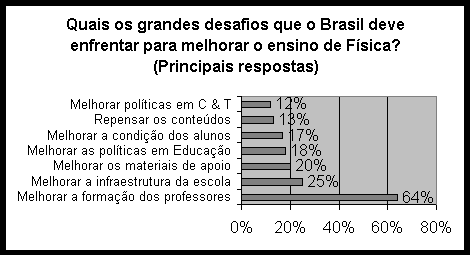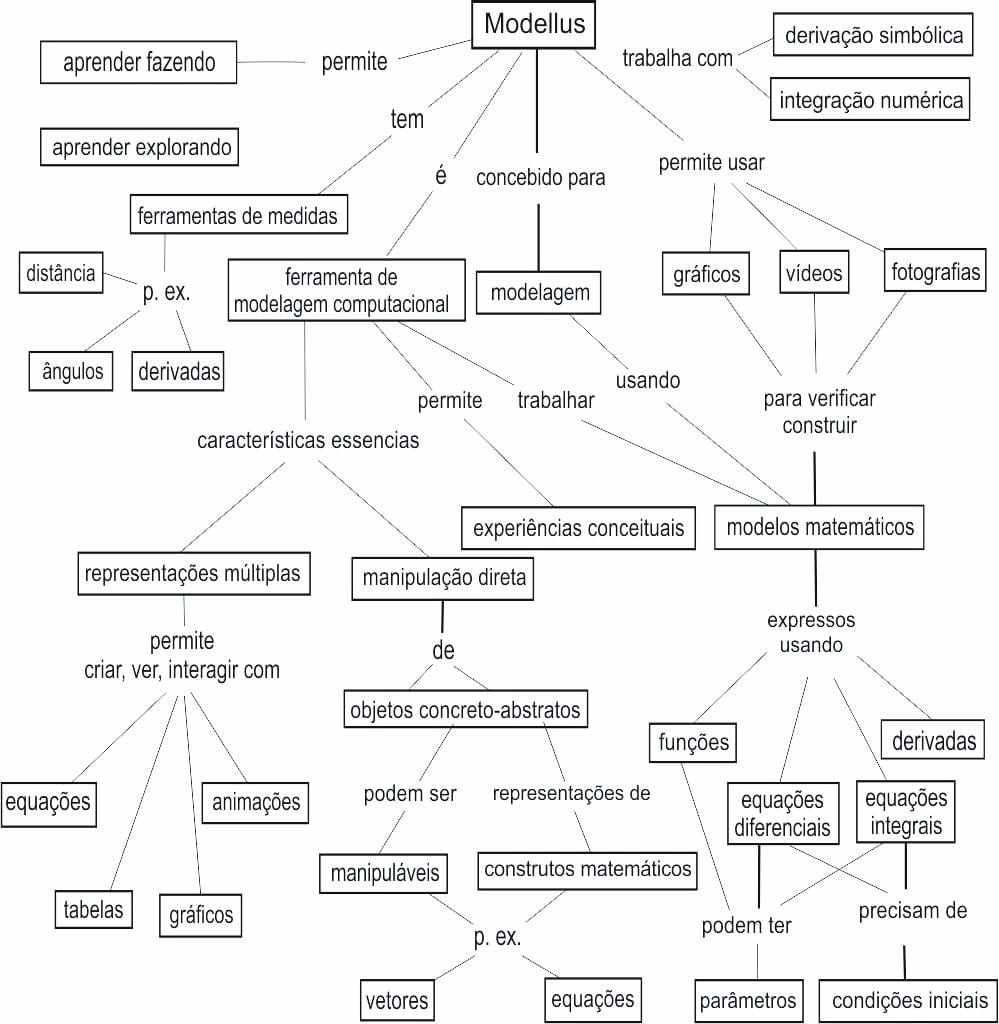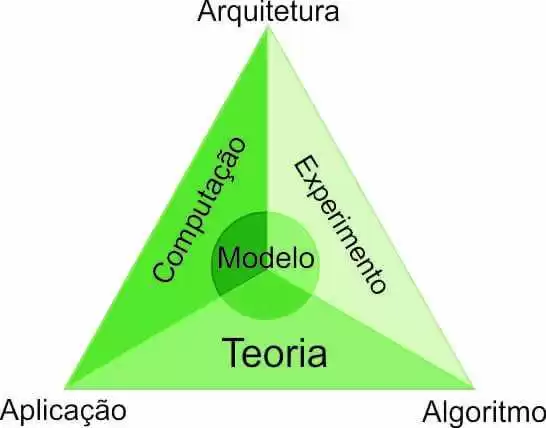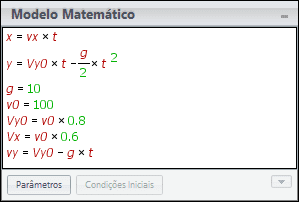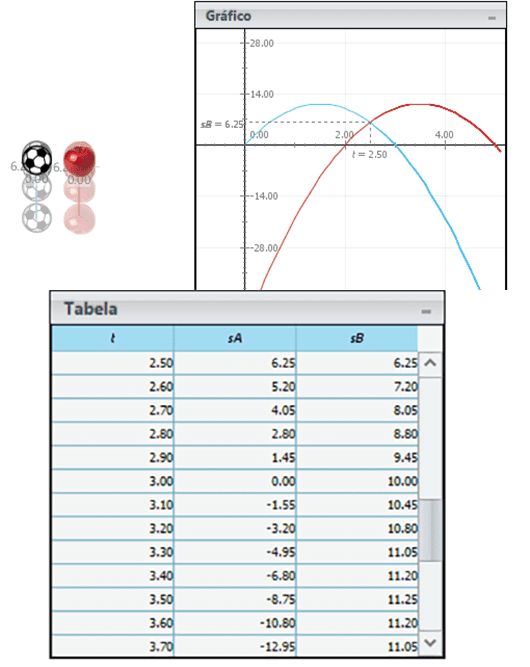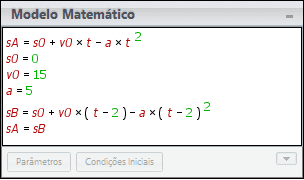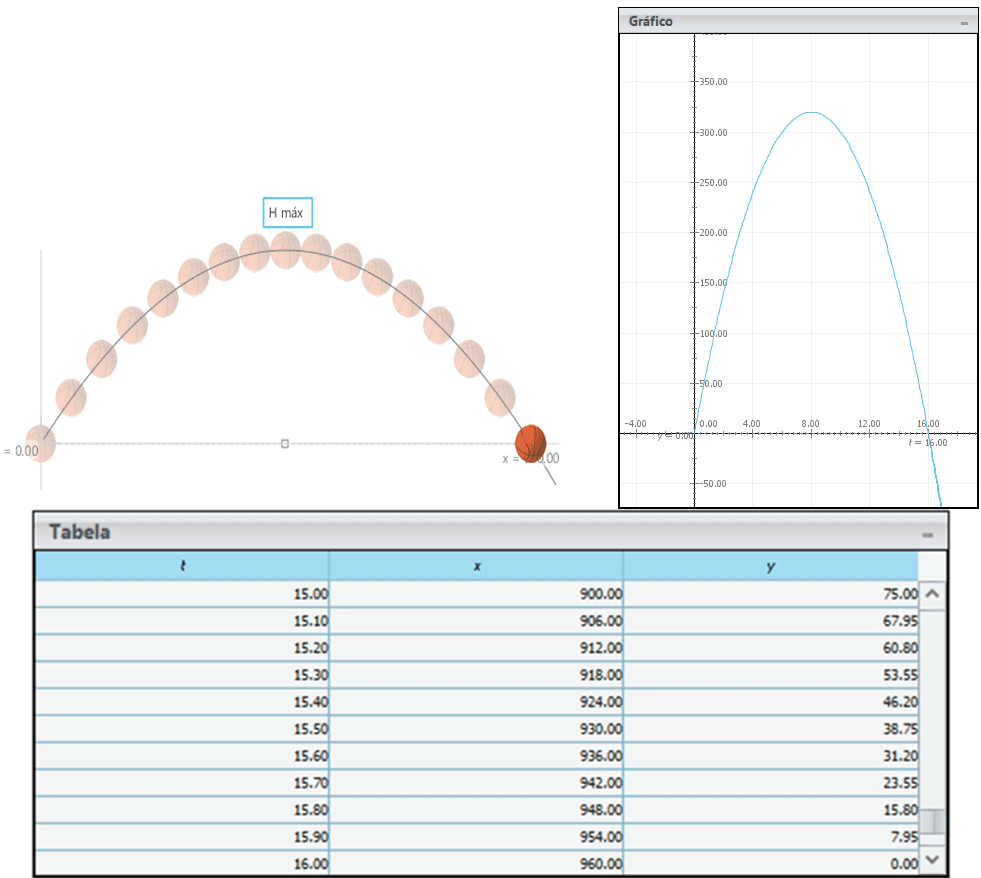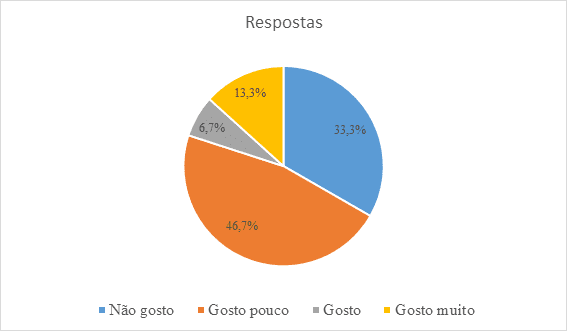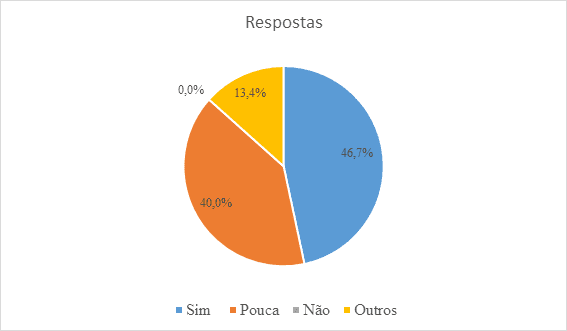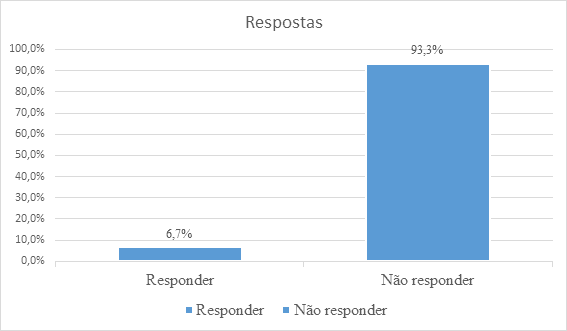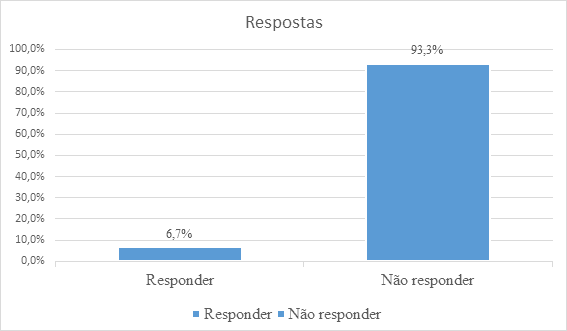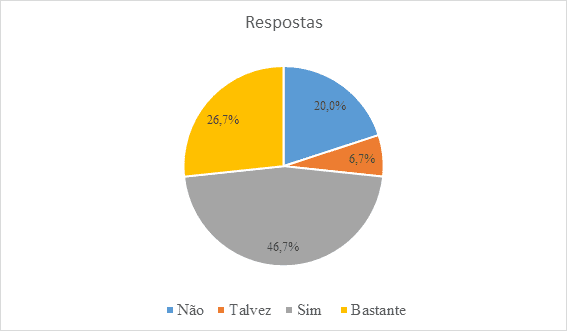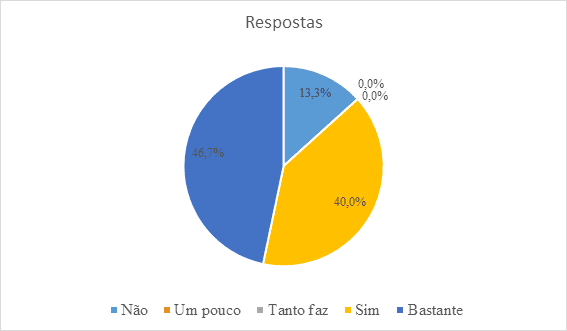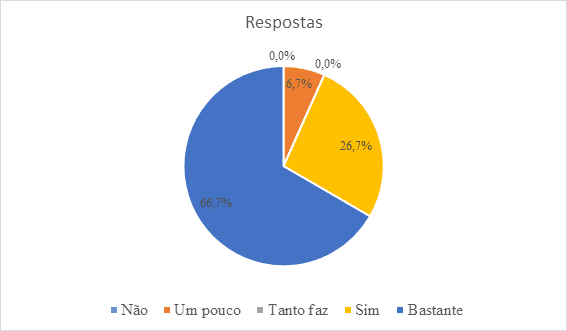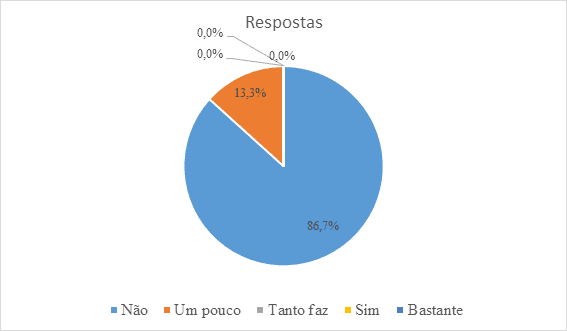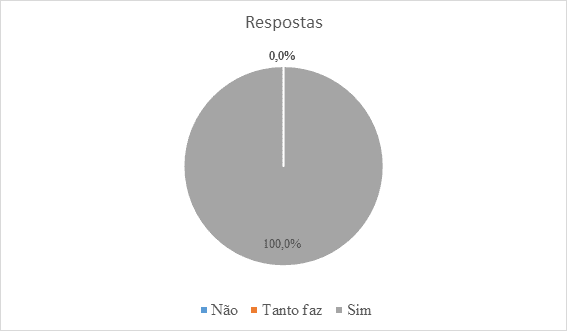ORIGINAL ARTICLE
CARDOSO, Kaio Felipe Nink [1], JUNIOR, Gilberto Nunes da Silva [2], JÚNIOR, João Hermano Torreiro de Carvalho [3]
CARDOSO, Kaio Felipe Nink. JUNIOR, Gilberto Nunes da Silva. JÚNIOR, João Hermano Torreiro de Carvalho. The use of computational modeling in kinematics functions with Modellus. Revista Científica Multidisciplinar Núcleo do Conhecimento. Year 05, Ed. 03, Vol. 04, pp. 117-140. March 2020. ISSN: 2448-0959, Access Link: https://www.nucleodoconhecimento.com.br/education/kinematics-functions
ABSTRACT
The application of physics is still a challenge for the means of teaching, based on traditional methods, being able to exclude other more modern means and that make greater use of educational technologies. We made use of the computer modeling program, Modellus, mainly focused on kinematics applications, with two exercises involving the movements of Vertical Release and Oblique Release, since difficulties are raised regarding the understanding, possibly generated by the educational methods exhibited. We applied the exercises in a questionnaire with 15 students of the 2nd Grade of High School of IFBA / Barreiras, as a sample for analysis of the way students evaluate the current teaching of Physics and the possible needs of new methodologies in the education of this Science.
Keywords: Physics teaching, software, computational modeling, student evaluation.
1. INTRODUCTION
In the midst of numerous technological advances, much has to be discussed about how education is being applied, since chalk and blackboard are still heavily used in the classroom, and may not give room for more dynamic activities. With regard to the qualitative aspect, we have an 18th century school in the 21st century (VALENTE apud LOPES; FEITOSA, 2009). This becomes noticeable when noticing how the education model has not presented several transformations regarding its form of application.
It is noticed that students demonstrate a certain difficulty in learning the Exact Sciences, such as physics, for example. The use of traditional teaching methods and the absence of modern pedagogical means are reasons for this problem (SANTOS; ALVES; MORET, 2006). On the other hand, it is known that many teaching environments may not have sufficient resources to improve classroom teaching, as well as adequate professional training.
Presenting itself as a free software, Modellus is an application focused on computational modeling of functions applied for the teaching of kinematics in both Mathematical sciences and Physical Sciences, allowing the user to make and remake representations, exploring them on the most diverse perspectives (VEIT; TEODORO, 2002). Another important characteristic provided by Modellus is the multiple representation, i.e., the user can create, see and interact with the analytical, analog and graphic representations of mathematical objects (TEODORO apud ARAUJO, 2002).
Among the subjects worked in the educational environments in Physics about mechanics, we can enter the study of kinematics, focusing on the movements of Vertical Release and Oblique Releases. It becomes possible to apply them with the help of Modellus through common exercises of thethemes, since by traditional didactic means may not captivate the interest of the student, but with an improvement of the software technique, according to several authors in the area of physics teaching, another result can be obtained.
Aiming at a good application of the exercises, a questionnaire aimed at high school students of the Federal Institute of Education, Science and Technology of Bahia – Campus Barreiras of integrated technical level courses was developed, to compare the performance of the teaching of Mathematical and Physical Sciences with and without the use of Modellus.
2. USE OF MODELLUS IN PHYSICS TEACHING
Physics usually represents a science of hard study, which most people have difficulty in understanding and interpreting it, being the study of the physical phenomena that occur around us. The need of the human being to understand the environment that surrounds him and explain the natural phenomena is the genesis of physics (RAMALHO JUNIOR; FERRARO; SOARES, 1998, p.2). Thus, it is perceived that physics is of paramount importance to human development, which according to the contemporary physicist Michio Kaku, is everywhere, such as: in the evolution of technologies, the media and transport, among others.
The relevance of this study is not denied and it should be taught as a way to observe the world and understand it, however, its teaching is still very out of time today. According to the research by Rosa, Perez and Drum (2009), the physicists interviewed stated that there is the importance of physical experiments, as a way of demonstrating reality, to the interpretation of the student, which would be the most appropriate way to teach. From this, we realized that physics education is not very attractive, presenting many calculations and logical visualization of systems, which understand the lack of interest in it.
Most often, the lack of different methodological techniques is responsible for a high number of “illiterate” in physics in the world. The research by Teixeira, Júnior and Golfette (2004), observed in Figure 1, shows us much of the reality of this education in Brazil, dealing with these teaching problems: lack of preparation of students (a previous knowledge in mathematics and a good interpretation of the systems), old educational system, lack of attractive teaching materials, infrastructure and teacher training are required.
Figure 1 – Difficulties in physics teaching (TEIXEIRA; JÚNIOR; GOLFETTE, 2004)
“In the teachers’ narratives, they highlight their view of physics, because for some (those who share the impossibility of this teaching), physics is reduced to calculations, to problem situations in which a complex mathematical and algebraic reasoning is required; this situation, in their opinion, is still in the process of development in the student of the initial grades, not allowing him to contemplate it in this school stage.” (ROSA; PEREZ; DRUM, 2009, p. 362)
According to the graph in Figure 1, teacher education is a question to be addressed, however, even though it is pointed out approximately three times more than the support materials. It is perceived that these, if appropriate of better teaching tactics, will also help to decrease the level of teacher education, since it will act at all educational levels. Alternative forms would be, the Internet as technical support and the increase of experimental procedures that induce the student to visualization, however, many systems studied are not possible to reproduce them because they work with conservative systems (in vacuum), therefore, a possibility related to this questioning, would be the use of computer modeling softwares, an example is the Modellus.
According to Aliprandini (2009), alternative forms of physics teaching, through simulations or in the modeling of the real environment enables the change of traditional teaching patterns (ALIPRANDINI; SCHUHMACHER; SANTOS, 2009).
Modellus is an educational program of computational modeling that allows the creation, simulation of physical and mathematical phenomena, used in the teaching of exact sciences. It allows to create, prepare and solve an issue, using the mathematical representation of the system to simulate it, thus manipulating the variables (time, distance, etc.) and observing how the physical phenomenon occurs. The idea is to use it as a way of interpreting problems, observing what each greatness exerts of influence, regardless of calculations.
“The program can be considered as interactive animation, and considered as a computational tool that assists the construction of knowledge, and used to resignify knowledge through clear, stable and differentiated meanings previously existing in the student’s cognitive structure.” (ALIPRANDINI; SCHUHMACHER; SANTOS, 2009, p. 1374)
What is intended when using the software in physics teaching is that physics learners know how to use the scientific knowledge acquired in decision making, from the development of their intellect in two ways, exploratory and expressive, according to Aliprandini, Schuhmacher and Santos (2009). The exploratory mode concerns the location of analytical, analog and graphic functions in the program, which develops mathematical knowledge by association, in addition to the exploration of other people’s systems; and the expressive mode, as a way of demonstrating creativity, creating users’ own models.
For Veit and Teodoro (2002), The Modellus enables a “constructivist learning”, occurring from the definition of ideas, having benefit at the cognitive level. This process is due to the fact that the use of the software is not at all trivial, being a slow learning process that requires an architectural thought to construct the simulations, having the construction not only cognitive, but also personal, reaching the objective of developing the worldview of students from the acquired scientific knowledge.
One aspect that shows the use of Modellus in the educational field, is that it is used in institutions around the world, as in the Uk Institute of Physics project. The program gained worldwide recognition in 1996 with the award of “1996 Software Contest of the Journal Computer in Physics” and in 1998 with 1st place in the Microsoft National Software Competition, 1998 in Lisbon (VEIT and TEODORO, 2002). Figure 2 presents the Modellus software in the form of a conceptual map. Briefly, computational modeling, related to the science of physical nature, makes the relationship between the equations and functions of Physics (algorithm) that describe the observed phenomenon (theory) and its application through computational simulation, within a language common to the user, that is, without the need to learn to program in another language, other than that which is already seen in the classroom (Figure 3).
Figure 2 – Uses for software (VEIT; TEODORO, 2002)
Figure 3 – Relationship of knowledge in Computational Modeling (Authors, 2017)
3. MATERIAL AND METHODS
3.1 EXERCISES AS AN EXAMPLE USING MODELLUS
Kinematics is the part of mechanics that describes movements, trying to determine the position, speed and acceleration of a body at each instant. (RAMALHO JUNIOR; FERRARO; SOARES, 1998). In educational environments, there are the applications, often theoretical and exhibition, of the themes previously addressed. This was worked on with two theoretical exercises taken from a high school textbook:
Ex. 01. (Vertical Launch) Two furniture A and B are launched vertically upwards, with the same initial speed of 15 m/s², from the same point. Mobile A is released instantly t=0s and mobile B is released 2s later. Determine, from the launch point, the position and the moment of the furniture meeting. Take g=10 m/s² and disregard air resistance.
Ex. 02. (Oblique Release) A body is released obliquely in the vacuum with initial velocity v0 = 100 m/s, in a direction that forms with the horizontal an angle θ such that sen θ = 0.8 and cos θ = 0.6. By adopting g = 10 m/s², determine:
(a) the modules of the horizontal and vertical components of the speed at the time of launch;
the instant when the body reaches the highest point of the trajectory;
the maximum height reached by the body;
the scope of the launch;
3.2 STUDENT ASSESSMENT ON TRADITIONAL PHYSICS AND PHYSICS WITH THE USE OF MODELLUS
By deepening in an educational scope, it is possible to diverge the traditional teaching methods exhibited from significant methods. One first needs to understand the traditional approach:
“As we know, the adult, in the traditional conception, is considered as finished man, “ready” and the student a “miniature adult”, which needs to be updated. Teaching, in all its forms, in this approach, will be teacher-centered. This type of teaching turns to what is external to the student: the program, the disciplines, the teacher. The student only carries out prescriptions that are fixed by outside authorities” (MIZUKAMI, 1986, p. 8)
This process is widely seen in classrooms, as an example, an exhibition physics class with a teacher performing exercises to the board may imply the results obtained on the performance of the students. According to Pelizzari, Kriegl, Baron, Finck and Dorocinski (2002, p 38), based on Ausubel’s study, we have another perspective, from the significant approach:
“Learning is much more meaningful as new content is incorporated into a student’s knowledge structures and acquires meaning for them from the relationship with their prior knowledge. On the contrary, it becomes mechanical or repetitive, since less is produced this incorporation and attribution of meaning, and the new content begins to be stored alone or through arbitrary associations in the cognitive structure.”
Using the ideas of Santos, Alves and Moret and Santos (2006), we used a questionnaire to evaluate the knowledge of the students who participated. Those involved constitute the Technical Course of High School, with a total of 15 students. The first stage followed with questions without the students’ knowledge about Modellus, as a way to evaluate the methods of education in the classroom.
- What is your relationship with the discipline of physics? (I don’t like it; I like it a little; I like it. I like It A Lot)
- Have you experienced difficulty in the study of Vertical Release and Oblique Release? (Yes; Little; No)
- Proposed Vertical Posting Exercise
- Proposed Oblique Launch Exercise
- Do you believe that traditional teaching methods can influence the lack of interest of the discipline? (No; A little bit; Whatever It Does; Yes, i’m not going to Quite)
- Do you believe that the use of software can contribute to the understanding of both the discipline of Mathematics and Physics? (No; A little bit; Whatever It Does; Yes, i’m not going to Quite)
Then, an exhibition presentation was made about the Modellus, highlighting its applications and contributions to the teaching of Physics and Mathematics. After this introduction, the exercises used in the previous questionnaire were applied in the software, analyzing the information arranged in their simulation. It was concluded with a second stage consisting of a questionnaire about the use of Modellus once presented:
- Did the use of computational modeling facilitate the understanding of the proposed exercises? (No; A little bit; Whatever It Does; Yes, i’m not going to Quite)
Have you experienced difficulty in the way the program presents its results? (No; A little bit; Whatever; Yes, i’m not going to Quite)
Do you believe that the use of software such as Modellus could be used in the classroom to contribute to the teaching of Physics? (No; Whatever; Yes)
What is your final consideration of the work done? (Discursive question)
4. RESULTS AND DISCUSSIONS
4.1 EXERCISES APPLIED IN MODELLUS
In Vertical Launch Exercise 1, the instant and the meeting position of furniture A and B are requested.Considering that sA=sB, it is easy to use the hourly space function to find the meeting instant (t=2.5 s) and later find the position (sA=sB=6.25 m).
In exercise 2 of Oblique Launch, the velocity module is sought at the initial instant of launch, both horizontally (Vx=60 m/s) and vertically (V0y=80 m/s), as well as the instant of the body at the highest point (t=8 s), the maximum trajectory height (H=320 m) and the launch range (A=960 m). Using the mathematical operations of horizontal motion, you can find the respective results.
Both exercises are easily found in textbooks or on the Internet itself with their most varied resolutions. What may seem like a simple problem for a given student can cause some discomfort for others, which is a point for problematization about how traditional methods may be influencing such results.
The use of computational modeling comes as a perspective to change this scenario. Having the development of the previous problems in the Modellus software, it is possible to obtain a breadth in the results, as shown in Figure 4:
Figure 4 – Mathematical Model for the proposed exercise of Vertical Release in The Modellus (Authors, 2017)
Figure 5 – Simulation of the proposed Vertical Release exercise in Modellus (Authors, 2017)
The software will depend on the description of the mathematical functions to be applied, making it possible to obtain the result through animations, graphs and tables. Both bodies obey their functions. Figure 5 shows the instant of the bodies, seen through their respective graph and table. By the table, the instant (t=2.5 s) shows the moment of encounter at which Sa=Sb, as well as the graph of the positions as a function of time, according to the meeting point.
For the next problem situation, as shown in Figure 6, there was also an application through computational modeling
Figure 6 – Mathematical model to the proposed exercise of Oblique Release in the Modellus (Authors, 2017)
Figure 7 – Simulation of the proposed oblique release exercise in the Modellus (Authors, 2017)
From the simulation, as shown in Figure 7, it is possible to analyze the results questioned, such as the range of the launch A= 960 m, or the instant t at the highest point as 8 s. Certain values can be easily obtained, for example, by means of graph in the program, such as the maximum height H= 320 m, seen by the Y axis.
It is worth mentioning that the program allows you to boost your simulations, such as changing the particle for a soccer ball or basketball, adding images to the background of the animation and changing the colors in the chart and the data they will have, thus enabling greater user interaction with your work environment.
4.2 RESULTS OBTAINED IN STUDENT ASSESSMENT
Through the evaluation questionnaire, the perspectives prior to the introduction of Modellus and later were obtained. It began with the previous questions of the first stage, but as an evaluative form of the current teaching of Physics from the perspective of the student:
Figure 8 – Graph of Question 1 of the first stage (Authors, 2017)
- What is your relationship with physics discipline?
Figure 9 – Graph of Question 2 of the first stage (Authors, 2017)
2. Have you experienced difficulty in the study of Vertical Release and Oblique Release?
Figure 10 – Question 3 Graph of the first stage (Authors, 2017)
3. Ex. 01. (Vertical Launch) Two furniture A and B are launched vertically upwards, with the same initial speed of 15 m/s², from the same point. Mobile A is released instantly t=0 s and mobile B is released 2 s later. Determine, from the launch point, the position and the moment of the furniture meeting. Take g=10 m/s² and disregard air resistance.
Figure 11 – Question 4 Graph of the first stage (Authors, 2017)
4. Ex. 02. (Oblique Release) A body is released obliquely in the vacuum with initial velocity v0 = 100 m/s, in a direction that forms with the horizontal an angle θ such that sen θ = 0.8 and cos θ = 0.6. Adopting g = 10 m/s², determine: a) the modules of the horizontal and vertical components of the velocity at the moment of release; b) the instant when the body reaches the highest point of the trajectory; c) the maximum height reached by the body; (d) the scope of the launch.
Figure 12 – Question 5 Graph of the first stage (Authors, 2017)
5. Do you believe that traditional teaching methods can influence the lack of interest in discipline?
Figure 13 – Question 6 Graph of the first stage (Authors, 2017)
6. Do you believe that the use of other teaching methods (software, practical classes, etc.) can contribute to the understanding of both the discipline of Mathematics and Physics?
In general, we can analyze at first, according to the graph in Figure 8, that most participants do not have a broad interest in physics: a majority portion presented that they liked physics as a discipline or that they did not like it, a factor also present in the second question, according to the graph in Figure 10, in which a majority felt difficulty in learning the themes worked or felt little difficulty. There is the example of a participant who had study the contents alone.
In relation to the two exercises worked, it is noted that only one participant proposed to solve the questions, while the others left them blank, according to figures 10 and 11. It is possible to relate this factor with the lack of interest in the two themes arranged, in the evaluative activity itself or by the difficulty itself in the subject. For Veit and Teodoro (2002), “in practice, Physics represents for the student, for the most part, a very difficult discipline, in which it is necessary to decorate formulas whose origin and purpose are unknown”. Regardless of the reason in question, it is important to be sure that students are more interested or can minimize their difficulties in a broad way.
The last two questions present as an overview that will come from a view of the participant itself, but in a broad view of the methods that make up the teaching of science today. Most participants pointed out, according to figure 12, that the traditional form of teaching can influence the interest in the discipline, besides that other methodologies could be more used, according to Figure 13. We can ally according to Lima and Vasconcelos (2006, p. 399) based on the study by Krasilchik (2004, p. 184):
“The teacher, due to lack of self-confidence, preparation, or commoditism, is restricted to presenting to students, with minimal modifications, the material previously prepared by authors who are accepted as authorities. Supported by material planned by others and produced industrially, the teacher gives up his autonomy and freedom, becoming simply a technician.”
Thus we start from a vision in which students do not feel widely satisfied with the way they learn or learn – being thus believed – discipline. A monotonous exhibition class with a massive amount of calculations would be an example.
This follows with the second part of the evaluation via questionnaire, constituting another opinion about Modellus and its applications. After the presentation of the same, the participants were asked to evaluate it, making it possible to analyze whether the participants felt motivated or not to the technology:
Figure 14 – Question 1 of the second stage (Authors, 2017)
- Did the use of computational modeling facilitate the understanding of the proposed exercises?
Figure 15 – Question 2 of the second stage (Authors, 2017)
2. Have you experienced difficulty in the way the program presents its results?
Figure 16 – Question 3 of the second stage (Authors, 2017)
3. Do you believe that the use of software such as Modellus could be used in the classroom to contribute to the teaching of Physics?
It is noted that the answers were very positive regarding modellus as a teaching method, with a majority stating that the use of computational modeling facilitated the understanding of exercises, even if a little. Then, only a small portion presented a certain difficulty regarding the use of Modellus, while most did not present such a feat.
All showed confidence in the use of the software as a form of physics teaching, with a 100% approval of it. It ended with the final considerations of the participants, where perspectives were presented for the application of Modellus and suggestions for improvements as a way to further improve the use of the program:
- What is your final consideration of the work done?
– It is a good proposal to implement this software in physics classes!
– The application presented is very useful, since it has as its end, to facilitate the learning process in subjects focused on physics, making the subject more interactive and dynamic.
– A very good job, I’m horrible in physics and honestly I learned a subject that I found impossible
– The project presents a different way of seeing physics
– A great resource.
– Very good and rich for learning
– I found the work very good, because it greatly facilitated the understanding of the proposed exercises since the illustrative form of teaching facilitates for students.
– I believe that Modellus software should be implemented in physics classes
– The application is very interesting, and will certainly help in teaching and learning the discipline of Physics, being even playful.
– The group’s work was, at the very least, interesting. Considering the intention mentioned, the effort applied and especially the intention together with their actions. The project deserves, in my opinion, special attention and attempts for its application in the classroom, because physics (such as science and discipline) will become something more complex than it is without an appropriate methodology. Consequently, it will further increase the “dread” of students about it. Thus, and, therefore, the duo’s work should be considered as a great “methodological attempt”.
– It was a job well done and easy to understand
– Regarding the program, I think there has to be more organization in the separation of data and the animation icons. I found it very interesting, and I could use it during class. Especially when we need quick results. A compliment to the program is when they used the images in the representation of the results.
– Very creative and very help in interpreting the issue, I think a good instrument for use in the classroom and jobs.
– The work done is quite interesting, and it would be of great value to use this in the classroom, so that we students can observe more explicitly.
– It is a contribution to the teaching of physics further increasing the understanding on the various subjects, even if it requires improvement in relation to the proper use of this software, I believe it should be of great use.
5. FINAL CONSIDERATIONS
Educational research in the area of physics teaching shows that there is a deficit in learning, either by difficulty of discipline, teachers’ methodology, materials used, among others. The use of technologies would be a way to compensate for this “failure” in the system, since the technical field of information has become very large today, being used in various areas of human knowledge. From this point of view, as a solution, Modellus software is brought as a material to support the teaching of physical concepts, manipulating variables, animations, tables and graphs.
The program was chosen precisely because it is free, and allows the visualization of the animation and the values of variables and parameters used in it. It fits very well in the educational scope, being used with the central objective of interpreting what physical quantities influence in a system, in addition to the development of structural knowledge of models through equations that represent the movement of an object, direction of an object, etc.
As the software works with movements, it was inevitable to escape recurring issues to kinematics, therefore, vertical release and oblique release exercises were presented as a form of program testing. It is obtained from the studies of Veit and Teodoro (2002), Solano (2002), other references and the test itself, that through a simple interface, Modellus develops the thinking of users and helps in teaching physics with interactive animations, and can even be compared to “Word Office” its desktop.
With the questionnaire conducted about Modellus using the exercises of the subjects Vertical Launch and Oblique Release, it was obtained in the first evaluation that just over 75% of the evaluated, do not like or like physics, having a bad relationship with it. It is an important fact to the research, since in the second part, after showing the subjects using the program, 100% of the evaluated answered that the software is beneficial in learning, showing how the use of other methodologies, mainly, using technologies can be an excellent resource to physics teaching.
Modellus is not yet well known in Brazil, perhaps for the sake of the educational system, which is considered ancient and based on centuries past by many authors, which does not regulate many diversified forms of teaching for the investment of the areas. This may be the problem of not using the program, which, as noted, greatly assists in the learning of exact sciences, being addressed in this article the area of Physics. The solution to raise the numbers in education of the country in world rankings may be to diversify the methodologies used in teaching, and the use of Modellus would be a very important practice to this need.
REFERENCES
ALIPRANDINI, Daiane Maria; SCHUHMACHER, Elcio; SANTOS, Muriel Clasen dos. Processo Ensino e Aprendizagem de Física apoiada em software de modelagem. In: I SIMPÓSIO NACIONAL DE ENSINO DE CIÊNCIA E TECNOLOGIA, 1., 2009, Ponta Grossa. Ciência e Tecnologia. Blumenau: Francisco; Junior; Pinheiro, 2009. p. 1370 – 1380.
ARAUJO, Ives Solano. Um Estudo sobre o Desempenho de Alunos de Física Usuários Da Ferramenta Computacional Modellus na Interpretação de Gráficos em Cinemática. 2002. 109 f. Dissertação (Mestrado) – Curso de Física, Instituto de Física, Universidade Federal do Rio Grande do Sul, Porto Alegre, 2002.
KRASILCHIK, M. Prática de ensino de biologia. 4. ed. São Paulo: Ed. da USP, p.198, 2004.
LIMA, Kênio Erithon Cavalcante; VASCONCELOS, Simão Dias. Análise da metodologia de ensino de ciências nas escolas da rede municipal de Recife. Ensaio: aval.pol.públ.Educ., Rio de Janeiro , v. 14, n. 52, p. 399,Set. 2006 . Disponível em:<http://www.scielo.br/scielo.php?script=sci_arttext&pid=S0104-40362006000300008&lng=en&nrm=iso >. Acesso em: 05 out. 2017.
LOPES, Rosemara; FEITOSA, Eloi. Applets Como Recurso Pedagógico No Ensino De Física: Aplicação Em Cinemática. In: SIMPÓSIO NACIONAL DE ENSINO DE FÍSICA – SNEEF, 18., 2009, Vitória. Simpósio. Vitória: Unesp, 2009. p. 1 – 9.
MIZUKAMI, Maria da Graça Nicoletti. Abordagem Tradicional. In: MIZUKAMI, Maria da Graça Nicoletti. Ensino: As abordagens do Processo. São Paulo: Epu, 1986. Cap. 1. p. 7-18. Disponível em: <https://www.docdroid.net/MrZCc0F/maria-das-gracas-nicoletti-mizukami-ensino-as-abordagens-do-processo.pdf#page=14>. Acesso em: 05 out. 2017.
PELIZZARI, Adriana; KRIEGL, Maria de Lurdes; BARON, Márcia Pirih; FINCK, Nelcy Teresinha Lubi; DOROCINSKI, Solange Inês. Teoria da Aprendizagem Significativa Segundo Ausubel. Pec, Curitiba, v. 2, n. 1, p.37-42, jul. 2002.
RAMALHO JUNIOR, Francisco; FERRARO, Nicolau Gilberto; SOARES, Paulo Antônio de Toledo. Lançamento horizontal e lançamento oblíquo no vácuo. In: RAMALHO JUNIOR, Francisco; FERRARO, Nicolau Gilberto; SOARES, Paulo Antônio de Toledo. Os Fundamentos da Física 1: Mecânica. 9. ed. São Paulo: Moderna, 2007. Cap. 9. p. 144-162.
ROSA, Cleci Werner da; PEREZ, Carlos Ariel Samudio; DRUM, Carla. Ensino de Física nas Séries Iniciais: Concepções da Prática Docente. Revista Investigações em Ensino de Ciências (ienci), Porto Alegre, v. 12, n. 3, p.357-368, 09 out. 2009.
SANTOS, Gustavo H.; ALVES, Lynn; MORET, Marcelo A.. Modellus: Animações Interativas Mediando a Aprendizagem Significativa dos Conceitos de Física no Ensino Médio. Sitientibus: Série Ciências Físicas, Feira de Santana, v. 2, n. 7, p.56-67, nov. 2006. Anual. Disponível em: <http://dfis.uefs.br/sitientibus/vol2/Expediente2006_Main-SPSS.pdf>. Acesso em: 18 ago. 2017.
TEIXEIRA, Ricardo Roberto Plaza; JÚNIOR, Modesto Pantaleo; GOLFETTE, Bruno Henrique. PERFIL DOS PROFESSORES DE FÍSICA DO ENSINO MÉDIO EM SÃO PAULO. 2004. Disponível em: <http://www.ufpa.br/ensinofts/perfilpfsp.html>. Acesso em: 20 dez. 2005.
VEIT, E. A.; TEODORO, V. D.. Modelagem no Ensino: Aprendizagem de Física e os Novos Parâmetros Curriculares Nacionais para o Ensino Médio. Revista Brasileira de Ensino de Física, São Paulo, v. 24, n. 2, p.87-95, jul. 2002. Disponível em: <http://www.scielo.br/scielo.php?script=sci_arttext&pid=S1806-11172002000200003&lng=en&nrm=iso>. Acesso em: 17 set. 2017.
[1] Graduating in Computer Science, Computer Technician.
[2] Computer Technician.
[3] Master of education.
Posted: September, 2019.
Approved: March, 2020.
